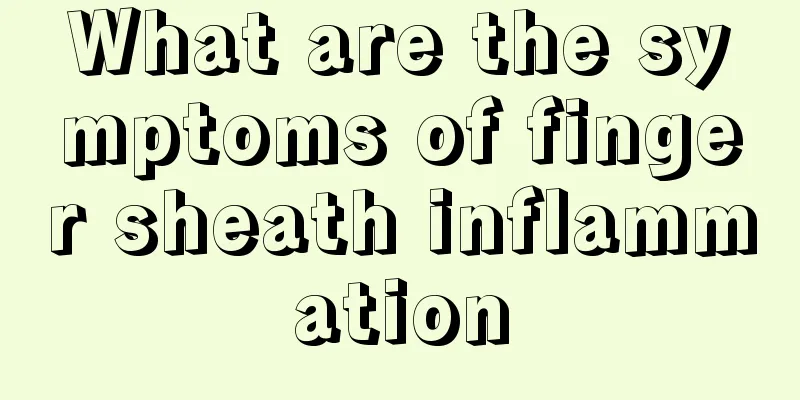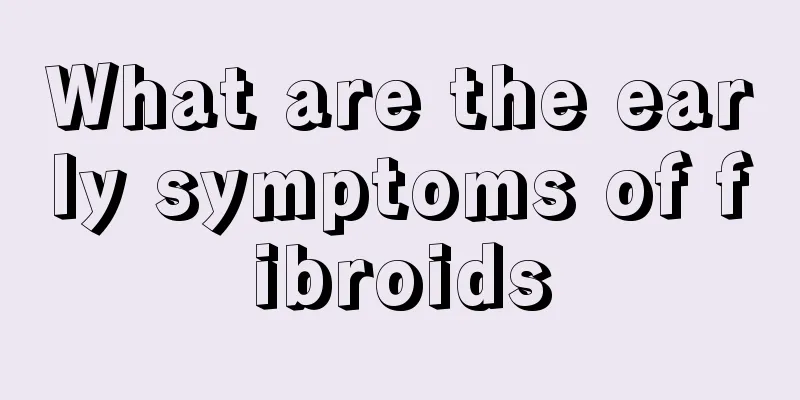What are the symptoms of finger sheath inflammation

|
Each of us has a pair of hands, and our hands have given us great help since the day we were born. When we were young, we relied on our hands to crawl and grab toys. As we grew older, we needed to use our hands to write, eat, and work. It can be said that our lives cannot be separated from flexible hands. Finger tenosynovitis is a disease that our fingers may get. What are the symptoms of finger tenosynovitis? Finger tenosynovitis, the most common of which is stenosing tenosynovitis of the flexor tendon, commonly known as "trigger finger", is mainly caused by the obstruction of sliding of the flexor tendon at the proximal starting point of the fibrous sheath. It occurs more frequently in women than in men, and is common in middle-aged and elderly people, with a higher incidence in the thumb, middle finger and ring finger. Tenosynovitis of the thumb can also occur in infants and young children. Diabetic patients are prone to simultaneous multi-digital tenosynovitis. Stenosing tenosynovitis of the flexor tendons often occurs on the palmar surface of the fingers. The flexor tendons are wrapped in tendon sheaths, which have the functions of nutrition, lubrication and friction reduction, and play an important role in the movement of fingers. Most common clinical tenosynovitis is caused by strain. The affected finger often experiences local swelling and pain, and snapping or even locking when the finger is actively flexed and extended. Causes: There is a fibrous thickening at the proximal end of the tendon sheath of the flexor tendon. When the tendon is strained and swollen, a relatively narrow point will be formed here, and a tendon nodule will be formed proximal to this narrow point, which will further hinder the sliding of the flexor tendon in the tendon sheath. Clinical manifestations: At the beginning of the disease, the fingers are painful on the palm side of the metacarpophalangeal joints, and the pain worsens when the fingers are flexed or extended. For patients with more serious conditions, there may be a snapping sound when the fingers are flexed or extended, similar to the feeling of pulling a trigger, so this disease is also called "trigger finger." The symptoms are more obvious in the morning when getting up, and the symptoms of some patients will be alleviated in the afternoon. When the condition is more serious, the interphalangeal joints cannot be fully extended (or flexed), which is called locking phenomenon. When palpated, there is tenderness on the palm side of the metacarpal head, and in most patients a nodule can be felt at this location, and the nodule slides longitudinally with flexion and extension of the fingers. Pain occurs during the finger flexion resistance test. As the condition improves, pain and other symptoms may disappear. treat 1. Conservative treatment: In the early stage of the disease, simply resting the affected hand or fixing it with a local brace for 2 weeks can completely relieve the symptoms. 2. Local blockade therapy: If conservative treatment is not effective, local blockade therapy can be used, which can mostly relieve symptoms. However, some patients will have recurrence of symptoms after 3-4 weeks of treatment. Although blockade therapy can be given again, a small number of patients will experience tendon rupture after multiple blockade treatments in clinical practice. 3. Micro-acupuncture treatment: If local blockade treatment is ineffective, a micro-acupuncture or a thicker syringe needle can be used for provocative treatment. The main purpose is to cut the entrance of the thickened tendon sheath. Since it is a minimally invasive operation, it may accidentally injure the flexor tendon and digital nerve, so a more experienced doctor is needed to perform the operation. 4. Surgery can be used for patients with severe or recurrent lesions. The thickened narrow ring should be removed during surgery. The extent of the removal should be determined by observing that the thickened part of the flexor tendon is not blocked by the sheath when the fingers are flexed and extended. |
<<: What are the symptoms of vitamin C deficiency
>>: What are the symptoms after quitting smoking
Recommend
Tips on how to make short hair fluffy
Modern society is a society of fashion and trends...
Types and prevention of epidemic infectious diseases
The most terrifying thing about epidemic infectio...
Symptoms of zinc deficiency
Zinc is a very important trace element in our bod...
Can codeine phosphate tablets treat advanced lung cancer? How to care for lung cancer patients?
Lung cancer is one of the malignant tumors that p...
What does colonoscopy check
Our human body is made up of many intestines, whi...
What are the early symptoms of lymphoma that are common?
With the acceleration of the pace of life and wor...
What are the symptoms of advanced lung cancer? 3 advanced lung cancer symptoms you must know
Lung cancer is a disease with a high mortality an...
What is the best food to eat during chemotherapy for advanced lung cancer
What are the best foods to eat during chemotherap...
What are the symptoms of infection after induced abortion?
For women who have an unexpected pregnancy, if th...
What are the symptoms of cerebral hemorrhage?
Bleeding of the brain is also called cerebral hem...
What are the preventive measures for cervical cancer?
It is reported that sunlight has a strong influen...
What to do if the legs are hot due to lumbar spine
The lumbar spine can cause some complications, so...
How to clean the carpet
It always brings a lot of harm in life, and with ...
What harm does laryngeal cancer do to patients
What harm does laryngeal cancer do to patients? T...
What are the early symptoms of skin cancer?
Everyone knows that skin diseases are not easy to...









